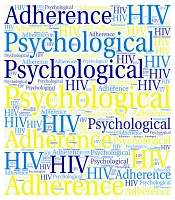Dear Editor,
HIV is a chronic disease that is completely manageable with current antiretroviral treatments (ART), and people living with HIV (PLWH) can live like other people in society if there is full adherence to ART. There are different definitions for treatment adherence, but the definition accepted by most evidence is adherence of more than 95%, meaning that PLWH consume at least 95% of their medications (1-3). In Iran, the mean treatment adherence in 2006 was about 60%, which was lower than the global mean of about 70% (1, 4).
As a result of effective and continuous training and psychological interventions in voluntary counseling and testing (VCT) centers and positive clubs (PCs), the mean adherence has gradually increased, so that the current overall mean adherence to ART in VCT centers is approximately 95%, and in PCs is about 97%. However, adherence varies by gender and key populations, including people who inject drugs (PWIDs), prisoners, men who have sex with men (MSM), female sex workers (FSWs), and transgender individuals. The practical results of this significant increase in adherence to treatment have led to a significant increase in the CD4 count of PLWH from about 300 cells/mm3 to about 700 cells/mm3 in Iran.
Regarding the factors affecting ART adherence, various studies have been conducted on PLWH in Iran. In the early decades, the most common cause of non-adherence was the side effects of antiretroviral (ARV) drugs, which have become rare with improvements in medication quality and the emergence of newer medicines. It should be noted that the most common drug side effects are gastrointestinal manifestations, which are resolved by continuing to take the ARV drugs. Currently, the most common cause of non-adherence to ART among PLWH is forgetfulness, which necessitates more psychological and pharmacological interventions to ensure complete adherence to treatment (5-11).
